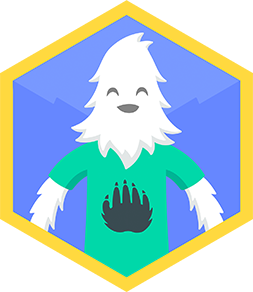Let's Talk About Identities
Create a personal identity collage using photos, drawings, and words to explore and share your interests, family, culture, and talents with others.



Step-by-step guide to Let's Talk About Identities
Journey to the Center: Why Identity is Important | Sidney Muntean | TEDxOrangeCountySchoolOfTheArts
Step 1
Gather all the Materials Needed and place them on a clear table or floor space.
Step 2
Pick your poster board or large paper as the base for your collage and lay it flat.
Step 3
Think of four to six things that show who you are like hobbies family foods or talents and write them on a scrap piece of paper.
Step 4
Find photos drawings or magazine pictures that match the things on your list and put them in a pile.
Step 5
Use scissors to carefully cut out the photos and pictures you want to use.
Step 6
Draw at least three original small pictures on blank paper that show your interests or talents.
Step 7
Choose short words or phrases to label each photo or drawing and write them neatly on small pieces of paper.
Step 8
Arrange your cutouts drawings and word labels on the poster board until you like how it looks.
Step 9
Glue or tape each piece to the poster board starting with the pieces you placed at the back.
Step 10
Stick on stickers or add scrap paper decorations to make your collage colorful and fun.
Step 11
Write a title for your collage at the top and sign your name at the bottom.
Step 12
Share your finished creation on DIY.org
Final steps
You're almost there! Complete all the steps, bring your creation to life, post it, and conquer the challenge!


Help!?
What can we use if we don't have poster board or magazines?
If you don't have poster board or magazines, use a flattened cereal box or cardstock as the base and substitute printed family photos, old drawings, fabric scraps, or colored paper for magazine pictures while using a glue stick or double-sided tape instead of liquid glue.
My pictures keep slipping or the collage wrinkles when I glue—what should we do?
To prevent slipping and wrinkling, follow the instructions to arrange all cutouts and labels on the poster board first, glue pieces starting with the ones placed at the back, use small amounts of glue or clear tape for heavier items, and press each glued area flat under a heavy book until dry.
How can we adapt the activity for younger or older kids?
For younger kids, pre-cut the photos, use stickers and help with scissors and labels, while older kids can write longer word labels, add more detailed original small drawings as instructed, experiment with layering and mixed media, or include short captions about each identity item.
How can we make the collage more special or longer-lasting?
Enhance the collage by adding textured scrap paper decorations like fabric or buttons, creating a painted or paper border, writing a clear title at the top and signing your name at the bottom as instructed, and then share the finished creation on DIY.org.
Watch videos on how to Let's Talk About Identities
What is the 'self'? The 3 layers of your identity. | Sam Harris, Mark Epstein & more | Big Think
Facts about personal identity and self-expression for kids
🎭 Artists like Vincent van Gogh painted more than 30 self-portraits — making a self-portrait collage connects you to a long creative tradition.
🎨 Collage as an art form was popularized by Pablo Picasso and Georges Braque around 1912 during the Cubist movement.
📸 The oldest surviving photograph (1826–1827) was made by Nicéphore Niépce and took hours to expose — today selfies take seconds!
🧩 The word "identity" comes from the Latin identitas, meaning "sameness" — it helps explain how we see ourselves and others.
🌍 There are over 7,000 languages spoken around the world, each carrying unique cultural stories you can explore in your collage.
How do I create a personal identity collage with my child?
What materials do I need for an identity collage activity?
What ages is the "Let's Talk About Identities" collage suitable for?
What are the benefits of making a personal identity collage?


One subscription, many ways to play and learn.
Only $6.99 after trial. No credit card required


